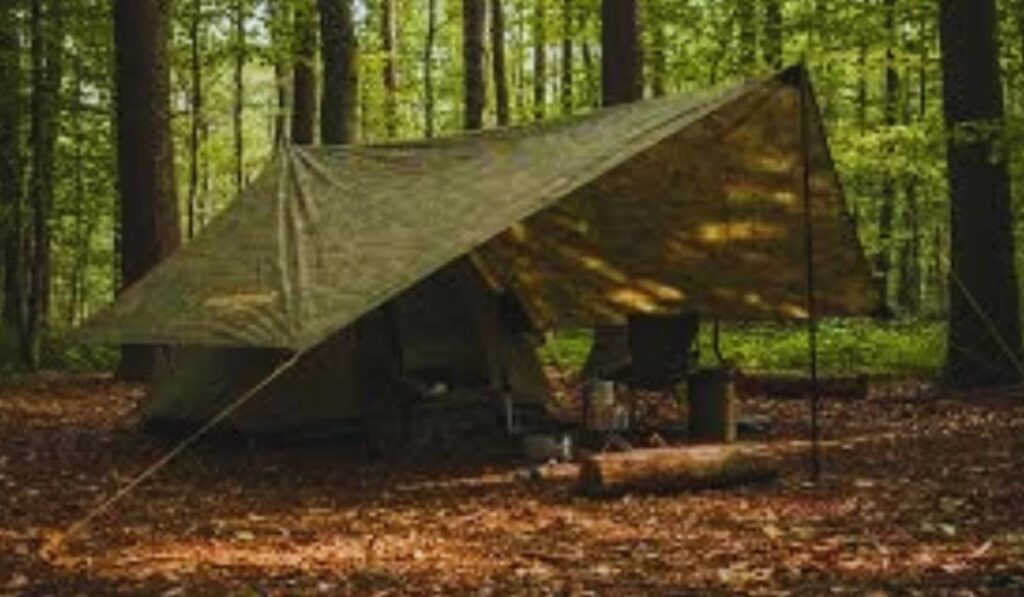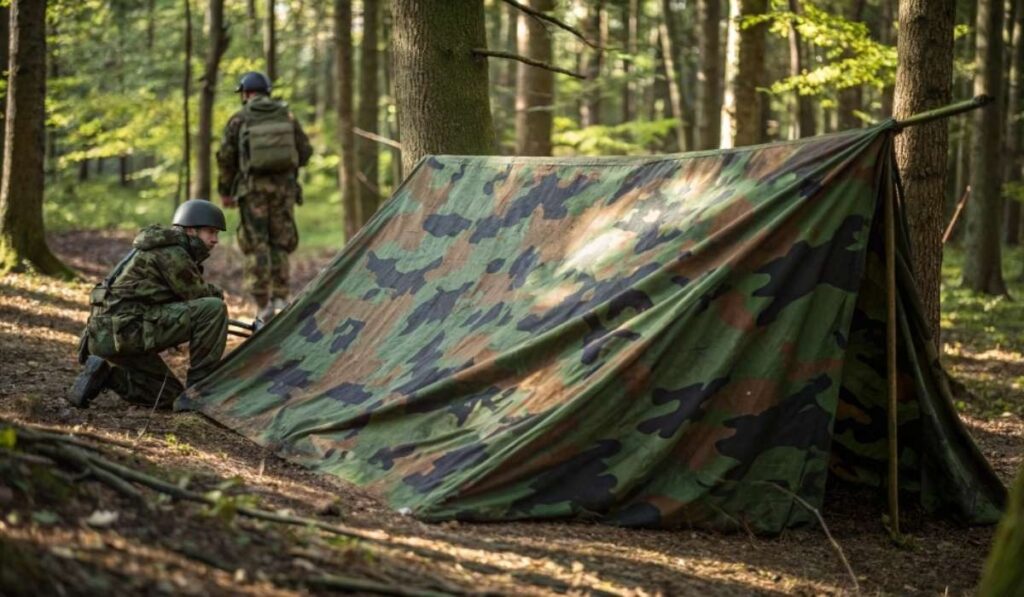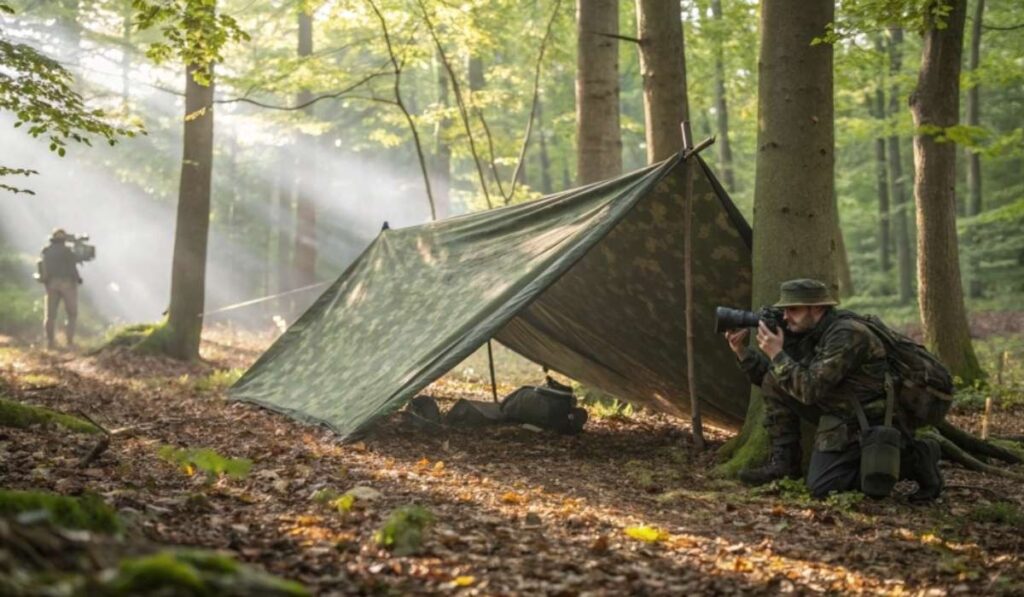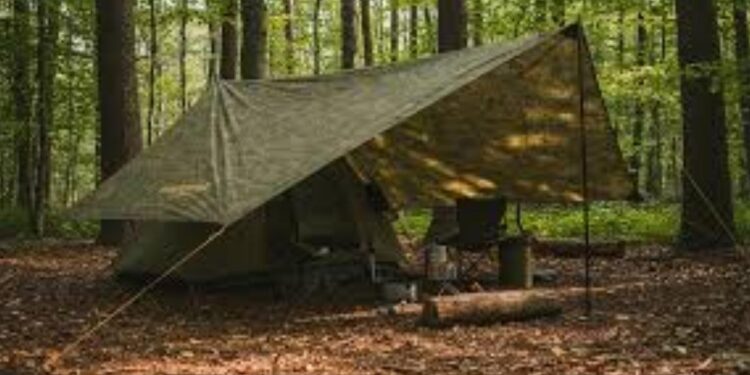Tarnplanen, derived from the German words for “camouflage tarp,” refers to a multi-purpose covering designed to provide concealment in outdoor environments. It is widely used by campers, hunters, survivalists, and military personnel who require protection and discretion in nature. are created from durable, weather-resistant materials that blend seamlessly with natural surroundings such as forests, grasslands, or mountainous terrain. This product is not just about hiding from sight; it is about achieving harmony with the environment while maintaining practical utility. Over time, has evolved from a basic tarp into a sophisticated outdoor essential that caters to numerous needs including shelter, concealment, and protection against weather conditions.
The Evolution and Purpose of Tarnplanen
The concept of camouflage dates back centuries, but Tarnplanen as we know it today emerged during the 20th century as a key piece of outdoor and military gear. Initially, camouflage tarps were designed for soldiers to conceal equipment, vehicles, and shelters during warfare. The goal was simple: to remain undetected by blending into the environment. However, as outdoor recreation and survival activities gained popularity, found new applications beyond the battlefield. Outdoor enthusiasts adopted for camping, hunting, bird watching, and bushcraft. Its evolution reflects the growing intersection of practicality, design, and nature. Modern versions feature innovative materials, waterproof coatings, and advanced color patterns that mimic natural textures.
Key Materials Used in Tarnplanen

The effectiveness of Tarnplanen depends largely on its construction. Most high-quality camouflage tarps are made from polyester, polyethylene, or nylon because these materials offer strength, flexibility, and resistance to environmental wear. The surface is often coated with a layer that repels water and protects against ultraviolet rays, ensuring that it remains functional under various weather conditions. Some are double-sided, offering different camouflage patterns for different terrains. Others include reinforced eyelets and edges to prevent tearing and allow easy setup. A good strikes a balance between lightness for portability and thickness for durability. Whether used as a temporary shelter, a groundsheet, or a cover for gear, the choice of material plays a critical role in its performance.
Design and Patterns of Tarnplanen
The beauty of Tarnplanen lies in its visual adaptability. Camouflage patterns are carefully designed to imitate the natural environment, helping users merge with their surroundings. Patterns may include woodland, desert, snow, or digital designs. Each serves a unique purpose, depending on the terrain. For instance, woodland camouflage features greens, browns, and blacks to blend into forests, while desert variants use tans and beiges to match sandy regions. Some modern even employ advanced pixelated or 3D patterns, which break up outlines more effectively than traditional designs. The right pattern can mean the difference between standing out and remaining completely invisible in the wild.
Uses of Tarnplanen in Outdoor Activities

Tarnplanen serves a broad range of uses that go far beyond concealment. For campers, it offers shade, protection from rain, and a quick way to build a makeshift tent or windbreak. Hunters rely on it to stay hidden from wildlife, ensuring they do not disturb the natural behavior of animals. In survival situations, can act as a temporary shelter, an emergency blanket, or even a rainwater collector. Hikers and adventurers also use it to cover their gear or vehicles. The versatility of makes it one of the most practical tools to include in any outdoor kit. It embodies the principles of adaptability and preparedness, which are essential for thriving in nature.
Tarnplanen in Military and Tactical Use
The military origins of Tarnplanen still influence its design and use today. Soldiers and tactical teams continue to rely on camouflage tarps for concealment, protection, and strategic positioning. is often used to cover vehicles, camps, or equipment, reducing visibility from both ground and aerial surveillance. The material’s weatherproof nature makes it suitable for long-term field operations, where durability and discretion are vital. Some military include infrared-resistant coatings that prevent detection by thermal imaging devices. This advanced adaptation highlights how combines traditional camouflage principles with modern technology. Even in civilian markets, these tactical-grade tarps are highly valued for their superior resilience and reliability.
Advantages of Using Tarnplanen

One of the main advantages of Tarnplanen is its multi-functionality. It can be used as a tarp, shelter, shade, or protective covering, making it a vital part of outdoor gear. Its camouflage properties enhance safety for hunters or wildlife photographers who need to remain undetected. Additionally, provides excellent weather protection against rain, wind, and sunlight. Unlike ordinary tarps, it blends aesthetics with function, offering an environmentally integrated solution. The material is lightweight, portable, and easy to store, which makes it ideal for travelers. It also reduces the visual impact of human presence in nature, promoting environmentally responsible outdoor activities.
Choosing the Right Tarnplanen
Selecting the appropriate Tarnplanen depends on the intended use and environmental conditions. The first consideration is size. Smaller versions are ideal for covering equipment or creating compact shelters, while larger ones can accommodate full campsites. Material quality and waterproofing level are equally important. Those engaging in extended outdoor stays should choose heavy-duty versions with reinforced edges. The camouflage pattern should correspond to the surrounding environment for maximum concealment. For example, a forest-patterned works well in wooded areas, while urban or snow patterns are suited to cityscapes or alpine settings. Finally, always check the ease of setup. Tarps with pre-installed loops or grommets simplify the process of securing the with ropes or stakes.
Tarnplanen Maintenance and Longevity

Proper care ensures that Tarnplanen remains effective for years. After each use, it should be cleaned to remove dirt, sap, and debris that could degrade the material over time. It is best washed with mild soap and water, avoiding harsh chemicals that may damage the waterproof coating. Once dry, it should be folded neatly and stored in a cool, dry place away from direct sunlight. Regular inspections help detect small tears or weak spots that can be repaired before they expand. Storing properly not only extends its lifespan but also maintains its camouflage quality and waterproof properties. Treating it as a long-term investment ensures it will continue to provide shelter and concealment whenever needed.
Environmental and Ethical Aspects of Tarnplanen
In recent years, manufacturers have begun focusing on sustainability in the production of Tarnplanen. Many companies now use eco-friendly materials and non-toxic dyes to reduce environmental impact. This shift is significant because outdoor enthusiasts are increasingly conscious of preserving the very environments they explore. Tarnplanen that blends naturally into the landscape while minimizing ecological harm represents a step forward in responsible outdoor gear design. Ethically sourced materials and recyclable components are also becoming more common. By choosing sustainable products, users can align their passion for outdoor adventure with their commitment to environmental stewardship.
The Future of Tarnplanen
The future of Tarnplanen looks promising as technology continues to improve materials and design. Innovations such as self-repairing fabrics, adaptive color-changing camouflage, and integrated solar panels are already being explored. These advancements could transform from a simple tarp into a multifunctional survival tool. As outdoor lifestyles and adventure tourism continue to grow, the demand for smarter and more efficient will also increase. In addition, digital camouflage patterns that adapt in real-time to surroundings through artificial intelligence may soon become a reality. Such developments would further cement Tarnplanen’s reputation as an essential tool for anyone who values both functionality and stealth in the great outdoors.
Frequently Asked Questions (FAQ)
1. What is Tarnplanen used for?
- Tarnplanen is primarily used for camouflage and protection in outdoor settings. It can serve as a shelter, groundsheet, shade cover, or concealment tarp for hunting, camping, and tactical operations.
2. What materials are Tarnplanen made from?
- Most Tarnplanen are made from durable materials like polyester, polyethylene, or nylon, often with waterproof and UV-resistant coatings to ensure longevity and reliability.
3. How do I choose the right Tarnplanen?
- When choosing a Tarnplanen, consider factors like size, material, camouflage pattern, and weather resistance. The best choice depends on the environment and your specific outdoor activities.
4. Can Tarnplanen be used for non-camouflage purposes?
- Yes, Tarnplanen is highly versatile and can be used as a rain cover, sunshade, or temporary shelter in both outdoor and emergency situations.
5. How should Tarnplanen be maintained?
- Tarnplanen should be cleaned after use with mild soap and water, thoroughly dried, and stored in a cool, shaded place to prevent damage and prolong its lifespan.


















